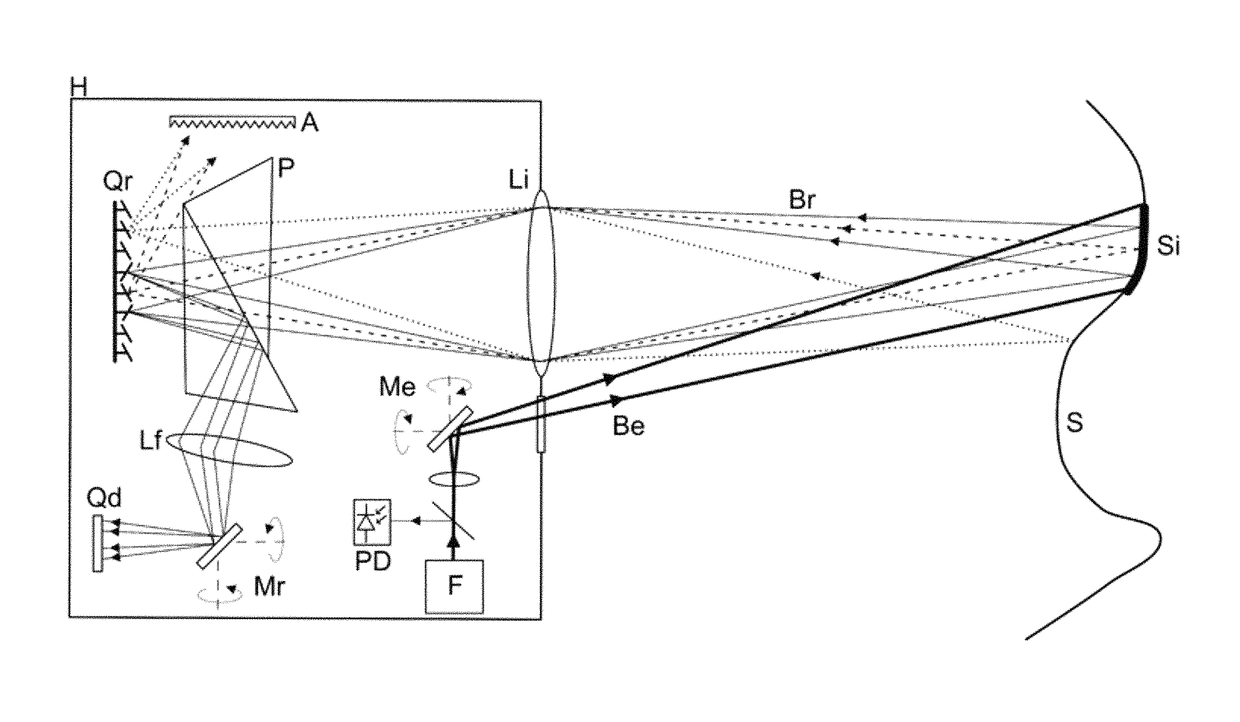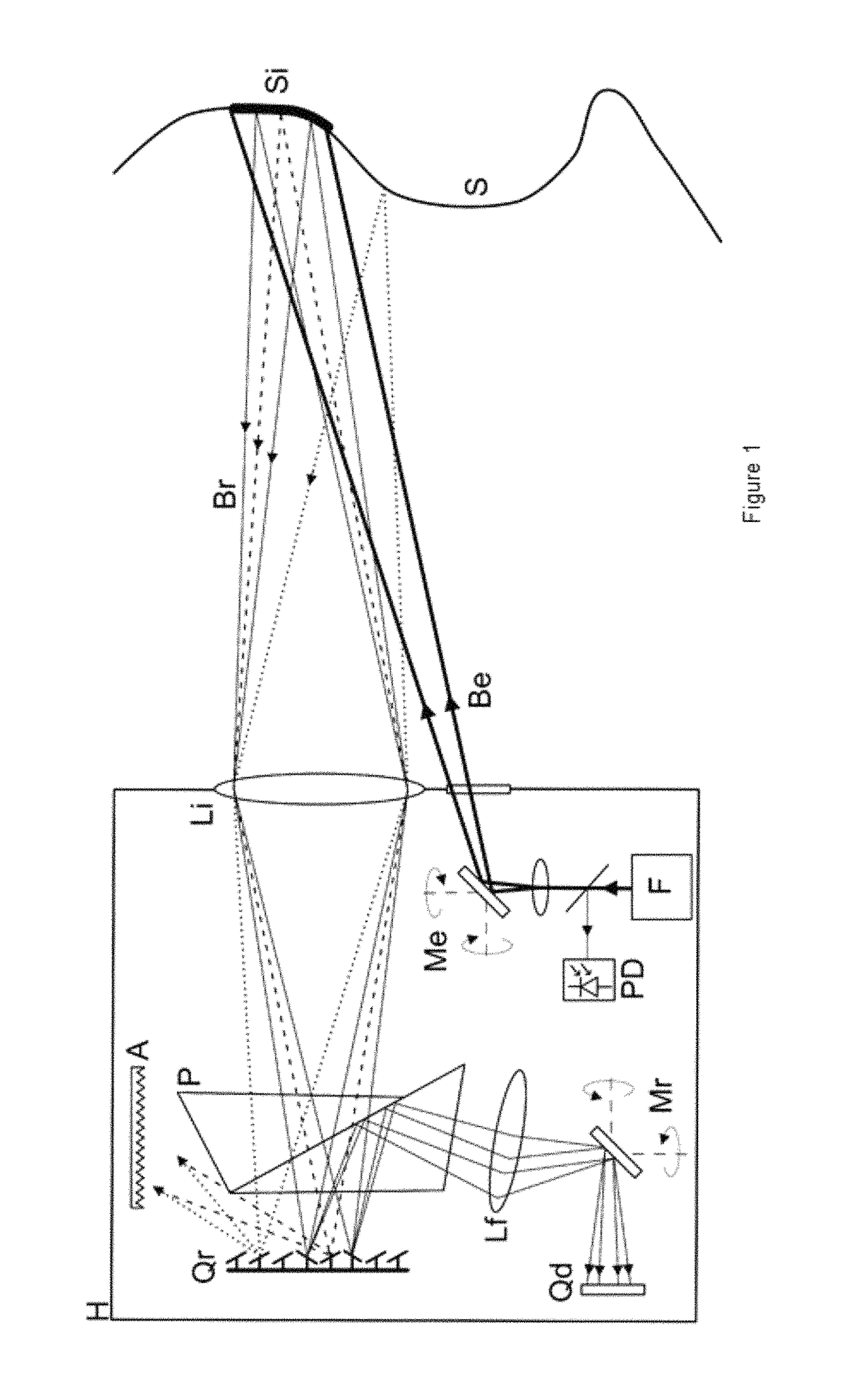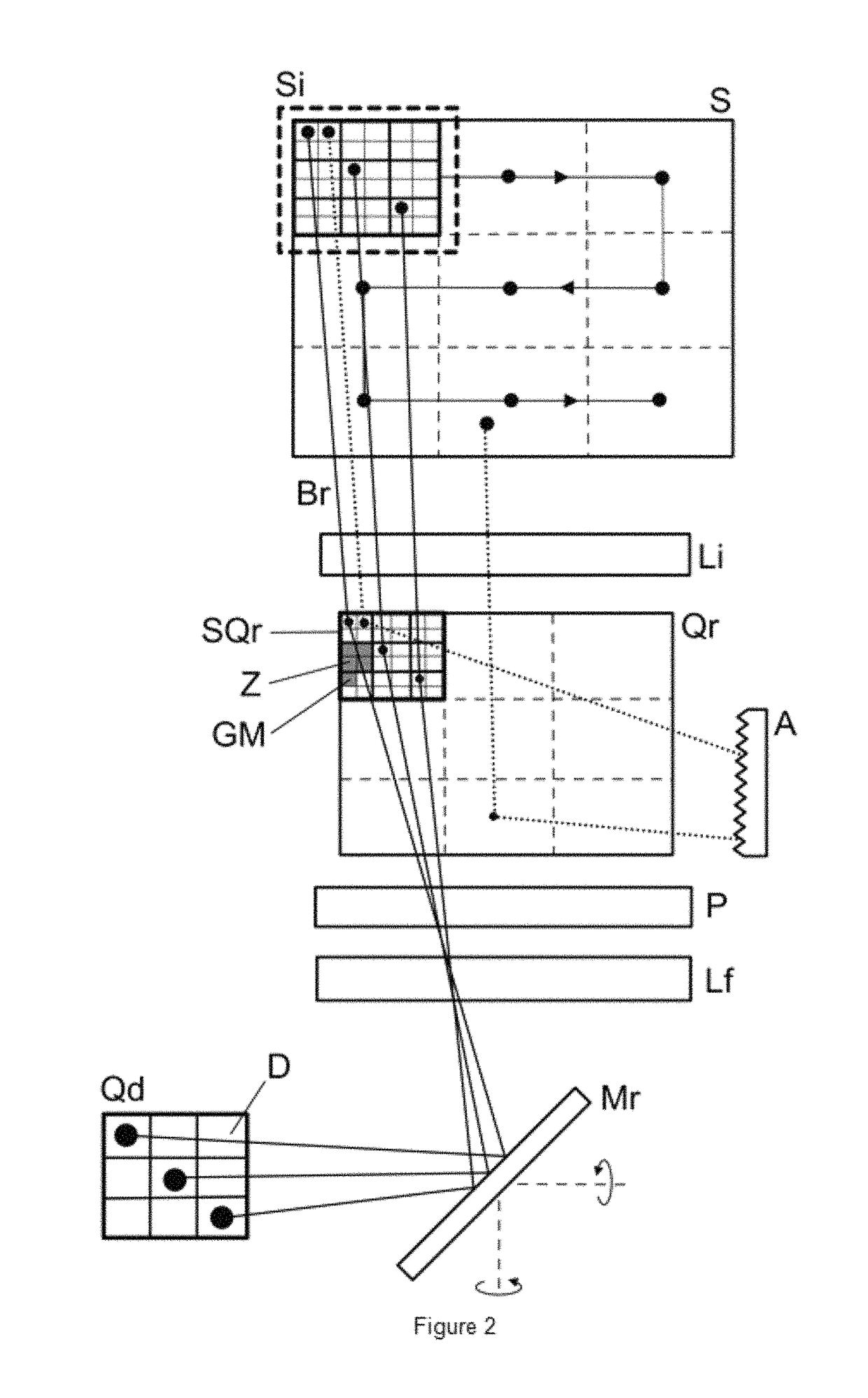System and method for scanning a surface and computer program implementing the method
a scanning system and surface technology, applied in the field of scanning systems, can solve the problems of limiting the amount of images which can be measured per second, negatively affecting the distance of detection, and limiting the performance of measurement speed, so as to increase the spatial resolution of the three-dimensional image
- Summary
- Abstract
- Description
- Claims
- Application Information
AI Technical Summary
Benefits of technology
Problems solved by technology
Method used
Image
Examples
Embodiment Construction
[0105]FIG. 1 illustrates part of the system proposed by the first aspect of the invention for one embodiment for which it comprises, arranged in a casing H:[0106]illumination means including a light source F, generally laser, and a series of optical elements arranged at the outlet of the light source F (beam splitter and lenses), as well as a photodetector PD for detecting the pulse emitted by the light source F and generating a corresponding detection signal to be used as the start of time counting for a pulsed TOF system. The illumination means are configured and arranged for projecting on the surface to be scanned S a light beam Be with a determined divergence for illuminating a sub-area Si of the area forming the surface to be scanned S;[0107]light direction means associated with the illumination means configured for directing the light beam Be so that it illuminates different sub-areas Si of the surface to be scanned S in an alternating manner, and comprising a reflective and / o...
PUM
 Login to View More
Login to View More Abstract
Description
Claims
Application Information
 Login to View More
Login to View More - R&D
- Intellectual Property
- Life Sciences
- Materials
- Tech Scout
- Unparalleled Data Quality
- Higher Quality Content
- 60% Fewer Hallucinations
Browse by: Latest US Patents, China's latest patents, Technical Efficacy Thesaurus, Application Domain, Technology Topic, Popular Technical Reports.
© 2025 PatSnap. All rights reserved.Legal|Privacy policy|Modern Slavery Act Transparency Statement|Sitemap|About US| Contact US: help@patsnap.com



